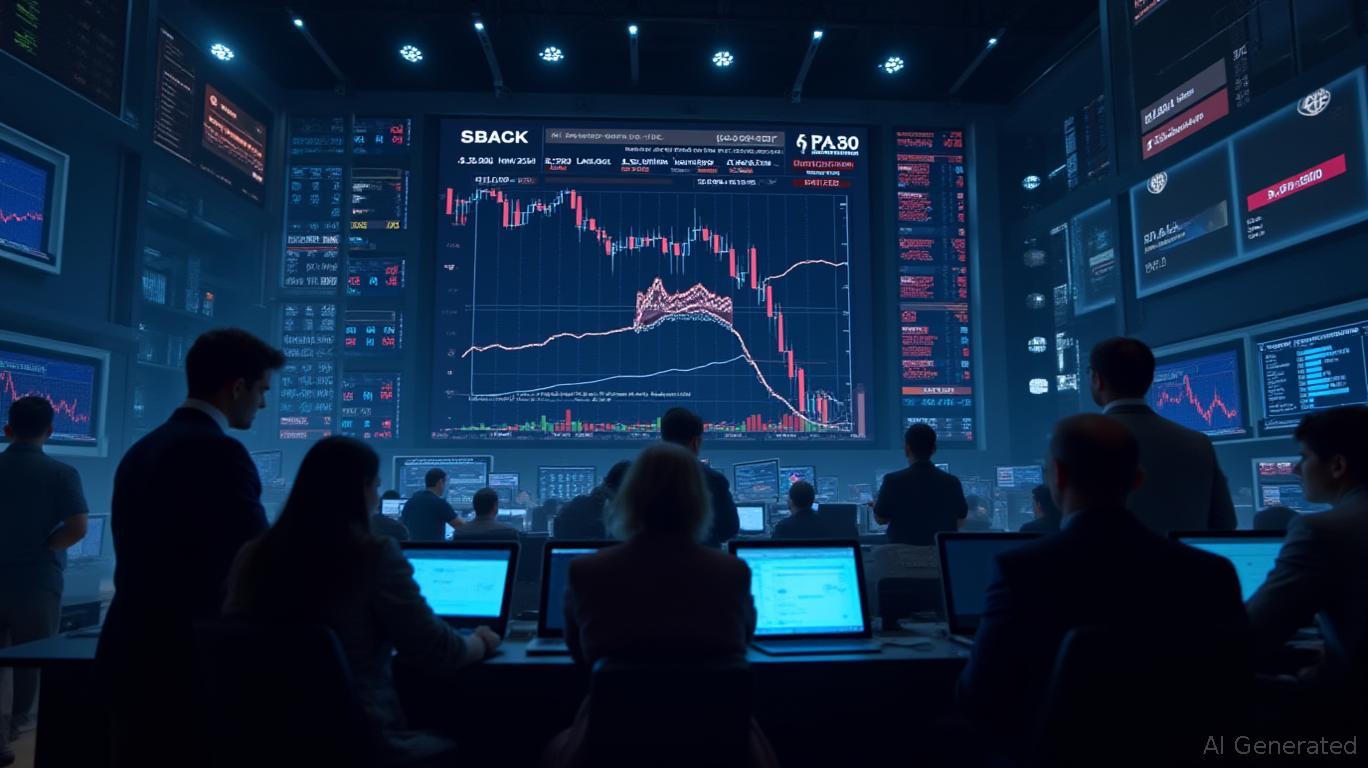Navigating the S&P 500 Range Amid AI Capex and Recession Risks: Prioritizing Quality and Timing the Trade Truce Catalyst
The S&P 500, hovering within its 5,000–5,500 range since early 2025, presents a critical crossroads for investors. Morgan Stanley's Chief Investment Officer, Mike Wilson, has framed this volatility as a strategic opportunity—one that demands a nuanced approach to quality stocks, timing of geopolitical catalysts, and hedging against recession risks. With AI capex deceleration weighing on earnings and tariff-driven inflation pressures easing, the stage is set for a tactical pivot toward high-quality cyclical equities. Here's how to navigate this landscape.
The Range: A Reflection of Uncertainty and Opportunity
The S&P 500's current range—5,000 as a hard floor and 5,500 as resistance—is no accident. It encapsulates two diametric forces:
1. Tariff-Induced Growth Drag: The lingering impact of U.S.-China tariffs (now reduced to 30% from 145%) has dampened corporate confidence, slowing AI capital expenditures and constraining profit margins.
2. Policy-Driven Optimism: The 90-day trade détente and prospects for further tariff reductions have reignited hopes of a recession avoidance. Meanwhile, the Fed's delayed pivot toward rate cuts fuels speculation about a 2026 easing cycle.

Wilson's base case calls for the index to reach 6,500 by year-end 2025, contingent on three catalysts:
- A durable U.S.-China trade deal (breaking the 5,500 resistance).
- A decline in 10-year Treasury yields to 4.0% (easing equity multiples).
- Earnings revisions breadth turning positive (a leading indicator of corporate health).
The Trade Truce Catalyst: A Buy Signal for Cyclical Plays
The reduction in tariffs has already sparked a buy-the-dip strategy, with cyclical sectors like industrials and utilities leading the recovery. The April 2025 lows—marked by a 30% S&P 500 drawdown—now serve as a psychological floor. Here's why:
- Tariff Resolution = Earnings Upgrade: Companies exposed to China (e.g., industrial machinery, semiconductors) face fewer margin headwinds. Morgan Stanley's top picks—Kinder Morgan (KMI), PPG Industries (PPG), and Rockwell Automation (RKLB)—benefit from infrastructure spending and AI-driven efficiency gains.
- Fed Rate Cuts Ahead: With the Fed projected to cut rates seven times in 2026, cyclical stocks with leverage to economic recovery will outperform.
AI Capex Deceleration: A Mixed Bag for Equity Strategy
While AI adoption has revolutionized sectors like tech and healthcare, its capex deceleration poses risks:
- Near-Term Drag: Slower AI spending has pressured earnings revisions, pushing 2025 EPS forecasts down to $257 (from $271).
- Long-Term Upside: AI-driven productivity gains could offset inflation and labor costs by 2026. Sectors like industrials (e.g., NOV, WillScot (WSC)) and utilities (e.g., NextEra Energy (NEE)) are positioned to leverage this transition.
The Recession Risk: Hedging Below 4,800
Wilson's bear case—a 16% drop to 4,900—requires caution. A recession triggered by two key triggers would test the range:
1. Yield Spikes: A 10-year Treasury yield above 5% could reignite equity-rate correlations, pushing the S&P 500 below 4,800.
2. Labor Market Stress: A 5% unemployment rate would force the Fed to cut rates prematurely, destabilizing markets.
To hedge, investors should:
- Underweight consumer discretionary stocks (e.g., Amazon (AMZN), Tesla (TSLA)) tied to inflation-sensitive spending.
- Overweight utilities and defensive industrials, which offer dividends and recession resilience.
The Call to Action: Position Now for 2026's Recovery
The sweet spot for investors lies in:
1. Buying dips below 5,200: Use corrections (e.g., a 5% pullback due to rate hikes) to accumulate quality cyclical stocks.
2. Avoiding overvaluation traps: Steer clear of tech names (e.g., Alphabet, Microsoft) trading at premium multiples without earnings clarity.
3. Timing the trade truce's next phase: Monitor U.S.-China negotiations for tariff rollbacks, which could unlock the 5,500–6,500 rally by late 2025.
Conclusion: Quality, Timing, and Caution
The S&P 500's 5,000–5,500 range is not a wall of worry but a launchpad for selective growth. By prioritizing high-quality cyclical stocks (Morgan Stanley's picks: KMI, PPG, WSC), timing the trade truce's momentum, and hedging against yield spikes, investors can position portfolios to capitalize on the 6,500–7,200 upside while insulating against recession risks. The time to act is now—before the Fed's pivot and tariff resolution ignite the next leg of the recovery.
Invest with discipline, and let the market's volatility work for you.

Comments
No comments yet